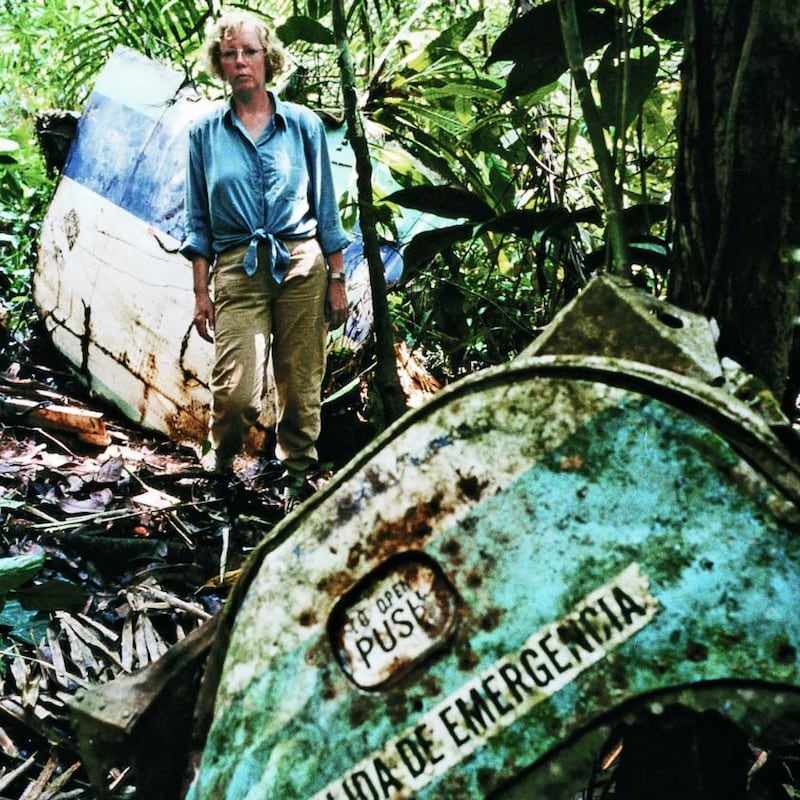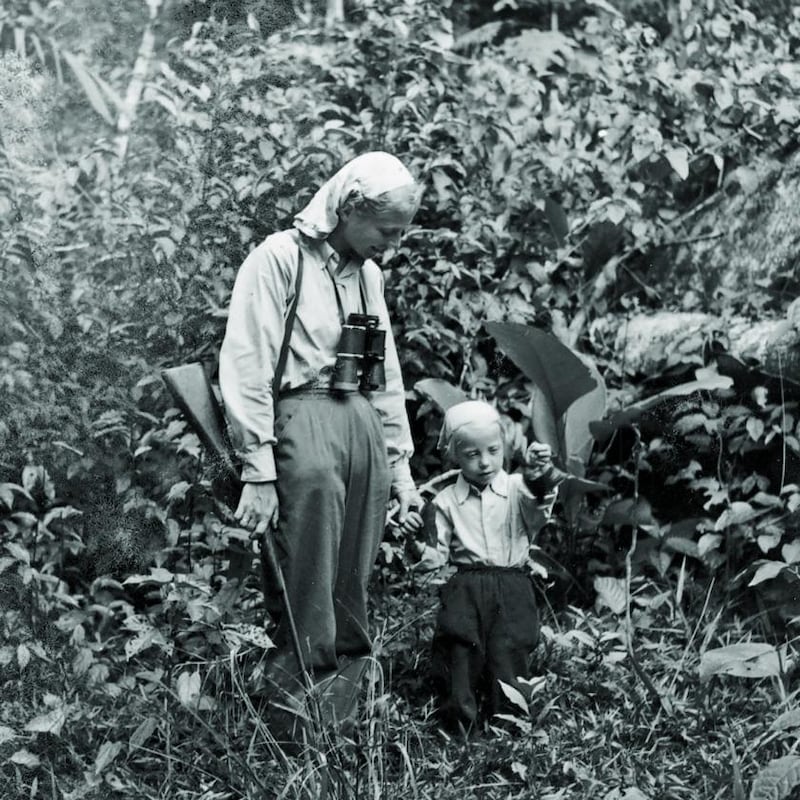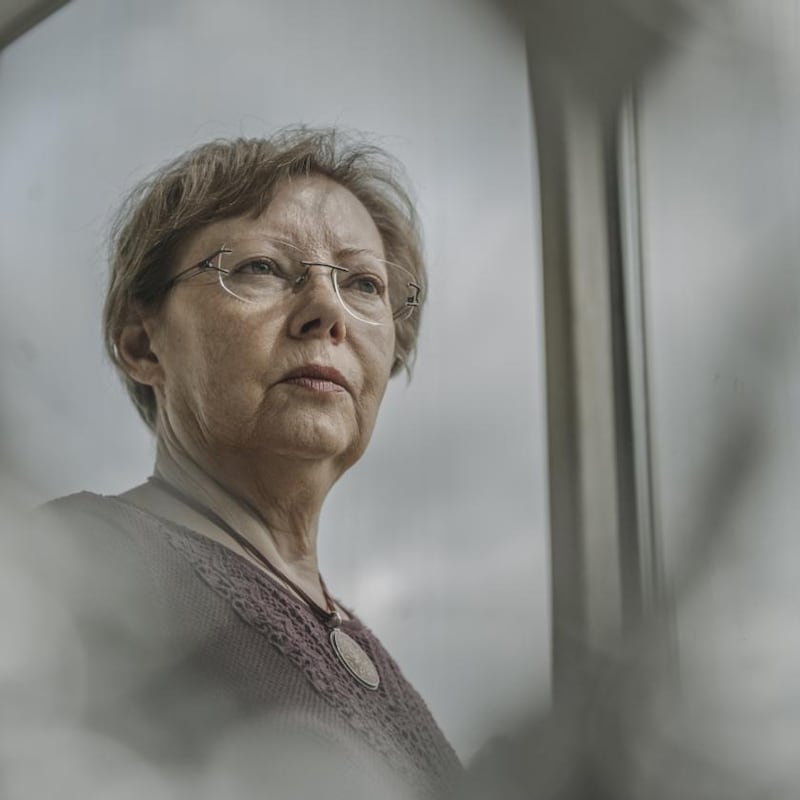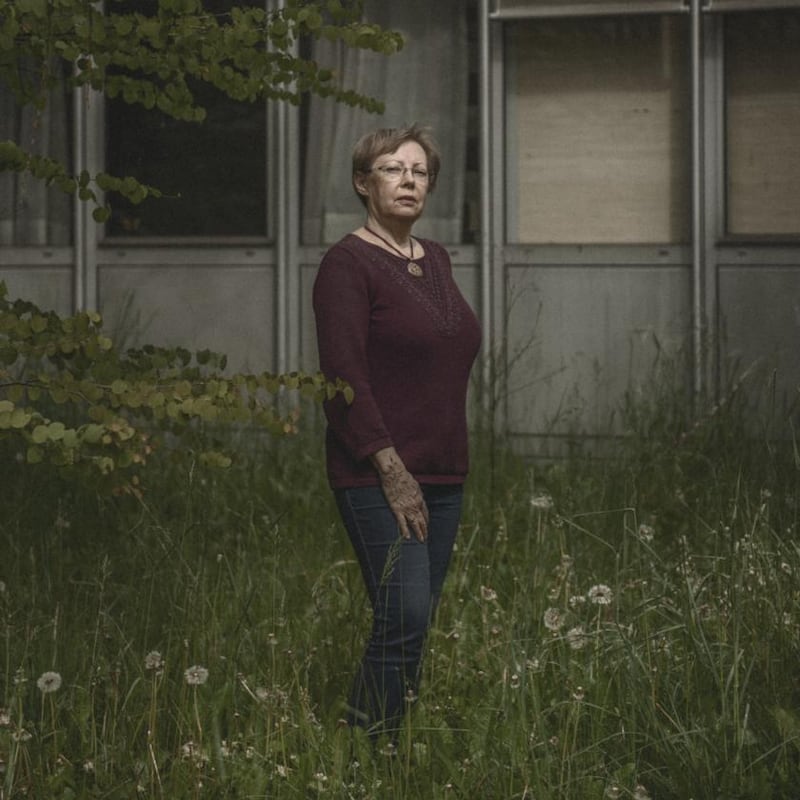On the morning after Juliane Diller fell to Earth, she awoke in the deep jungle of the Peruvian rainforest dazed with incomprehension. Just before noon on the previous day – Christmas Eve, 1971 – Juliane, then 17, and her mother had boarded a flight in Lima bound for Pucallpa, a rough-and-tumble port city along the Ucayali River. Her final destination was Panguana, a biological research station in the belly of the Amazon, where for three years she had lived, on and off, with her mother, Maria, and her father, Hans-Wilhelm Koepcke, both zoologists.
The flight was supposed to last less than an hour. About 25 minutes after takeoff, the plane, an 86-passenger Lockheed L-188A Electra turboprop, flew into a thunderstorm and began to shake. Overhead storage bins popped open, showering passengers and crew with luggage and Christmas presents.
The next thing I knew, I was no longer inside the cabin. I was outside, in the open air. I hadn't left the plane; the plane had left me
“My mother, who was sitting beside me, said, ‘Hopefully, this goes all right,” recalls Diller, who spoke by video from her home outside Munich, where she recently retired as deputy director of the Bavarian State Collection of Zoology. “Though I could sense her nervousness, I managed to stay calm.”
From a window seat in a back row, the teenager watched a bolt of lightning strike the plane’s right wing. She remembers the aircraft nose-diving and her mother saying, evenly, “Now it’s all over.” She remembers people weeping and screaming. And she remembers the thundering silence that followed. The aircraft had broken apart, separating her from everyone else onboard. “The next thing I knew, I was no longer inside the cabin,” Diller says. “I was outside, in the open air. I hadn’t left the plane; the plane had left me.”
As she plunged, the three-seat bench into which she was belted spun like the winged seed of a maple tree toward the jungle canopy. “From above, the treetops resembled heads of broccoli,” Diller recalls. She then blacked out, only to regain consciousness – alone, under the bench, in a torn minidress – on Christmas morning. She had fallen about 3,050 metres, nearly 3km. Her row of seats is thought to have landed in dense foliage, cushioning the impact. Juliane was the sole survivor of the crash.

Miraculously, her injuries were relatively minor: a broken collarbone, a sprained knee and gashes on her right shoulder and left calf, one eye swollen shut and her field of vision in the other narrowed to a slit. Most unbearable among the discomforts was the disappearance of her eyeglasses – she was nearsighted – and one of her open-back sandals. “I lay there, almost like an embryo for the rest of the day and a whole night, until the next morning,” she wrote in her memoir, When I Fell From the Sky, published in Germany in 2011. “I am completely soaked, covered with mud and dirt, for it must have been pouring rain for a day and a night.”
She listened to the calls of birds, the croaks of frogs and the buzzing of insects. “I recognised the sounds of wildlife from Panguana and realised I was in the same jungle and had survived the crash,” Diller says. “What I experienced was not fear but a boundless feeling of abandonment.” In shock, befogged by a concussion and with only a small bag of candy to sustain her, she soldiered on through the fearsome Amazon: 2½-metre speckled caimans, poisonous snakes and spiders, stingless bees that clumped to her face, ever-present swarms of mosquitoes, riverbed stingrays that, when stepped on, instinctively lash out with their barbed, venomous tails.
The jungle caught me and saved me. It was not its fault that I landed there
It was the middle of the wet season, so there was no fruit within reach to pick and no dry kindling with which to make a fire. River water provided what little nourishment Juliane received. For 11 days, despite the staggering humidity and blast-furnace heat, she walked and waded and swam.
This year is the 50th anniversary of LANSA Flight 508, the deadliest lightning-strike disaster in aviation history. During the intervening years, Juliane moved to Germany, earned a doctorate in biology and became an eminent zoologist. In 1989, she married Erich Diller, an entomologist and an authority on parasitic wasps. Despite an understandable unease about air travel, she has been continually drawn back to Panguana, the remote conservation outpost established by her parents in 1968. “The jungle caught me and saved me,” says Diller, who hasn’t spoken publicly about the accident in many years. “It was not its fault that I landed there.”
In 1981, she spent 18 months in residence at the station while researching her graduate thesis on diurnal butterflies and her doctoral dissertation on bats. Nineteen years later, after the death of her father, Diller took over as director of Panguana and primary organiser of international expeditions to the refuge. “On my lonely 11-day hike back to civilisation, I made myself a promise,” Diller says. “I vowed that if I stayed alive, I would devote my life to a meaningful cause that served nature and humanity.”
That cause would become Panguana, the oldest biological research station in Peru. Starting in the 1970s, Diller and her father lobbied the government to protect the area from clearing, hunting and colonisation. Finally, in 2011, the newly minted ministry of environment declared Panguana a private conservation area. To help acquire adjacent plots of land, Diller enlisted sponsors from abroad. Largely through the largesse of Hofpfisterei, a bakery chain based in Munich, the property has expanded from its original 180 hectares (445 acres) to 1,600.
“Panguana offers outstanding conditions for biodiversity researchers, serving both as a home base with excellent infrastructure, and as a starting point into the primary rainforest just a few yards away,” says Andreas Segerer, deputy director of the Bavarian State Collection for Zoology in Munich. “Its extraordinary biodiversity is a garden of Eden for scientists, and a source of yielding successful research projects.”

Diller described her youth in Peru with enthusiasm and affection. She was born in Lima, where her parents worked at the national history museum. Earthquakes were common.
“I grew up knowing that nothing is really safe, not even the solid ground I walked on,” Diller says. “The memories have helped me again and again to keep a cool head even in difficult situations.”
Diller laid low until 1998, when she was approached by movie director Werner Herzog, who hoped to turn her survivor’s story into a documentary for German TV. He had narrowly missed taking the same Christmas Eve flight while scouting locations for his historical drama Aguirre, the Wrath of God. He told her, “For all I know, we may have bumped elbows in the airport.”
Intrigued, Diller travelled to Peru and was flown by helicopter to the crash site, where she recounted the harrowing details to Herzog amid the plane’s still scattered remains. The most gruesome moment in the film was her recollection of the fourth day in the jungle, when she came upon a row of seats. Still strapped in were a woman and two men who had landed headfirst, with such force that they were buried 1 metre into the ground, legs jutting grotesquely upward.
“It was horrifying,” she tells me. “I didn’t want to touch them, but I wanted to make sure that the woman wasn’t my mother. I grabbed a stick and turned one of her feet carefully so I could see the toenails. They were polished, and I took a deep breath. My mother never used polish on her nails.”
The result of Diller’s collaboration with Herzog was Wings of Hope, an unsettling film that, filtered through Herzog’s gruff humanism, demonstrated the strange and terrible beauty of nature. “Making the documentary was therapeutic,” Diller says. “At the time of the crash, no one offered me any formal counselling or psychological help. I had no idea that it was possible to even get help.”

Diller attributes her tenacity to her father, Hans-Wilhelm Koepcke, a single-minded ecologist. He met his wife, Maria von Mikulicz-Radecki, in 1947 at the University of Kiel, where both were biology students. (Her doctoral thesis dealt with the coloration of wild and domestic doves; his dealt with woodlice). Late in 1948, Koepcke was offered a job at the natural history museum in Lima.
Getting there was not easy. Postwar travel in Europe was difficult enough, but particularly problematic for Germans. There were no passports, and visas were hard to come by.
To reach Peru, Koepcke had to first get to a port and inveigle his way on to a trans-Atlantic freighter. Setting off on foot, he trekked over several mountain ranges, was arrested and served time in an Italian prison camp, and finally stowed away in the hold of a cargo ship bound for Uruguay by burrowing into a pile of rock salt. When he showed up at the office of the museum director, two years after accepting the job offer, he was told the position had already been filled.
He persevered, and wound up managing the museum’s ichthyology collection. His fiancee followed him in a South Pacific steamer in 1950 and was hired at the museum, too, eventually running the ornithology department. An expert on neotropical birds, she has since been memorialised in the scientific names of four Peruvian species.
He is remembered for a 1,684-page, two-volume opus, Life Forms: The Basis for a Universally Valid Biological Theory. In 1956, a species of lava lizard endemic to Peru, Microlophus koepckeorum, was named in honour of the couple.
In 1968, the Koepckes moved from Lima to an abandoned patch of primary forest in the middle of the jungle. Their plan was to conduct field studies on its plants and animals for five years, exploring the rainforest without exploiting it. “I wasn’t exactly thrilled by the prospect of being there,” Diller says. “I was 14, and I didn’t want to leave my schoolmates to sit in what I imagined would be the gloom under tall trees, whose canopy of leaves didn’t permit even a glimmer of sunlight.”
The jungle is as much a part of me as my love for my husband, the music of the people who live along the Amazon, and the scars that remain from the plane crash
Diller’s parents instilled in their only child not only a love of the Amazon wilderness, but the knowledge of the inner workings of its volatile ecosystem. If you ever get lost in the rainforest, they counselled, find moving water and follow its course to a river, where human settlements are likely to be.
Their advice proved prescient. In 1971, Juliane, hiking away from the crash site, came upon a creek, which became a stream, which eventually became a river. On day 11 of her ordeal, she stumbled into the camp of a group of forest workers. They fed her cassava and poured gasoline into her open wounds to flush out the maggots that protruded “like asparagus tips,” she says. The next morning the workers took her to a village, from which she was flown to safety.

“For my parents, the rainforest station was a sanctuary, a place of peace and harmony, isolated and sublimely beautiful,” Diller says. “I feel the same way. The jungle was my real teacher. I learned to use old Indian trails as shortcuts and lay out a system of paths with a compass and folding ruler to orient myself in the thick bush. The jungle is as much a part of me as my love for my husband, the music of the people who live along the Amazon and its tributaries, and the scars that remain from the plane crash.”
Before 2020, when the coronavirus pandemic restricted international air travel, Diller made a point of visiting the nature preserve twice a year on monthlong expeditions. Much of her administrative work involves keeping industrial and agricultural development at bay.
She plans to go back, and continue returning, once air travel allows.
Fifty years after Diller’s traumatic journey through the jungle, she is pleased to look back on her life and know that it has achieved purpose and meaning. “Just to have helped people and to have done something for nature means it was good that I was allowed to survive,” she says with a flicker of a smile. “And for that I am so grateful.” – New York Times















